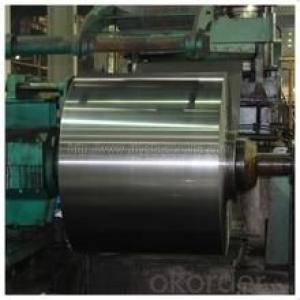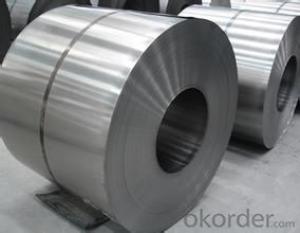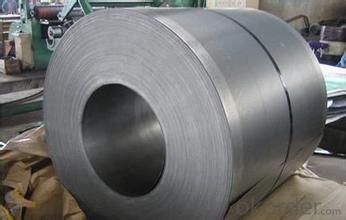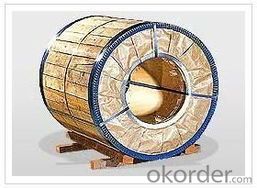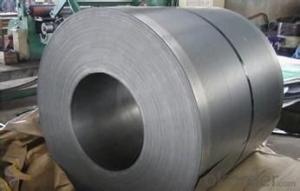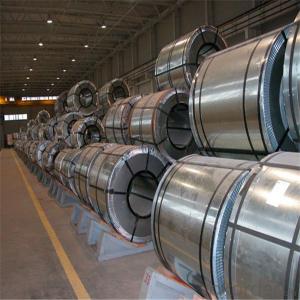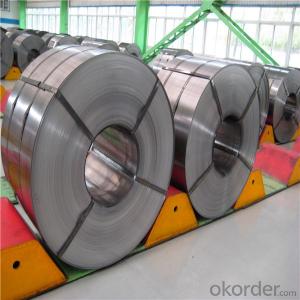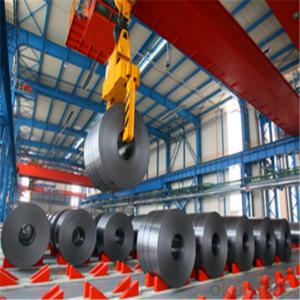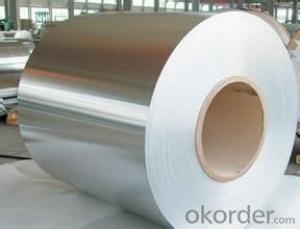cold rolled steel coil / sheet -SPCE in China
- Loading Port:
- Tianjin
- Payment Terms:
- TT OR LC
- Min Order Qty:
- 30 m.t.
- Supply Capability:
- 5000000 m.t./month
OKorder Service Pledge
OKorder Financial Service
You Might Also Like
Specification
The raw material of cold rolled steel coil/sheet is high quality hot rolled product, and after pickling, kinds of new technology and new process of global cold rolling production have been applied. Therefore the manufacturing, home appliance, automobile etc.
COLD ROLLED STEEL | |
Thicknenss | 0.10mm-4.00mm |
Width | 600mm-2000mm |
Sheets length | 1200-6000mm |
Coil inner diameter | 508-610mm |
Surface treatement | matt finish/bright finish,oiling/dry, bright anneal/black anneal |
Coil weight | 3-5t |
General Application of Cold Rolled Steel Coil:
1. Refrigerators, cabinets, power distribution baords and drums.
2. Automobile floor and roof panels.
3. Automobile fenders and quarter panels
4. Automobile fenders and quarter panels
General Application of Cold Rolled Steel Coil:
1. Refrigerators, cabinets, power distribution baords and drums.
2. Automobile floor and roof panels.
3. Automobile fenders and quarter panels
4. Automobile fenders and quarter panels
Our products enjoy an excellent reputation and have been exported to Europe, South-America, the Middle-East, Southeast-Asia, Africa and Russia etc.. We sincerely hope to establish good and long-term business relationship with your esteemed company.
- Q: Can steel coils be stored vertically?
- Yes, steel coils can be stored vertically.
- Q: Please people suggest me how can I select external finishing for Steel Building as there is a wide range of choice available.
- Hi okorder /
- Q: I got a muzzy carp point arrow and its head is steel with 1.7% carbon, its used in the water. Will i have to dry it after every use or is it stainless. Thanks
- Does it say stainless steel on it?
- Q: Or is it a coating that is applied? If so what types of steel? Or what types of coatings?
- No, usually they are just coated or galvanized. To make a steel that is truly more corrosion resistant raises it's cost quite markedly, where as coatings are pretty cheap. Almost all structural steel is just A36 mild steel (like 0.1% carbon, 0.05% Mn, and not much else). There are higher grades of structural steel, and bridges are made with truly more corrosion resistant carbon steels, but for a house it's just not the case.
- Q: Can steel coils be used in high-temperature applications?
- Yes, steel coils can be used in high-temperature applications. Steel is known for its excellent heat resistance and can withstand elevated temperatures without significant loss of strength or deformation.
- Q: What are the different types of steel coil cutting tools?
- There are several different types of steel coil cutting tools available in the market. These tools are specifically designed to cut steel coils efficiently and accurately. Some of the common types of steel coil cutting tools are: 1. Slitting shears: Slitting shears are widely used for cutting steel coils into narrow strips. These shears have multiple blades that make clean and precise cuts without causing any damage to the material. They are typically used for high-volume production and can handle various thicknesses of steel coils. 2. Rotary shears: Rotary shears are another type of cutting tool commonly used for cutting steel coils. They consist of rotating blades that shear through the material as it passes through. Rotary shears are ideal for cutting medium to thick steel coils and are known for their high cutting speed and accuracy. 3. Guillotine shears: Guillotine shears are heavy-duty cutting tools that can handle thick steel coils. They work by using a downward force to cut through the material with a single clean stroke. Guillotine shears are known for their power and precision, making them suitable for cutting large volumes of steel coils. 4. Laser cutting machines: Laser cutting machines are advanced cutting tools that use a high-powered laser beam to cut through steel coils. They offer precise and intricate cuts with minimal heat distortion. Laser cutting machines are ideal for cutting complex shapes and patterns on steel coils. 5. Water jet cutting machines: Water jet cutting machines use a high-pressure stream of water mixed with abrasive particles to cut through steel coils. This method is highly accurate and does not generate heat, making it suitable for cutting heat-sensitive materials. Water jet cutting machines can cut through various thicknesses of steel coils and produce smooth edges. Each type of steel coil cutting tool has its own advantages and is suitable for different applications. The choice of tool depends on factors such as the thickness of the steel coil, required precision, production volume, and budget.
- Q: Which one would be stronger? And should damascus steel be tempered?Thank You
- it depends on so many factors first of all is it functional damascus steel or can you see the grain? what type of carbon steel is it generally most makers use1045- 1060 a good quote of something I read was asking what steel is best for a sword is like asking how long string should be generally if they say carbon steel and do not say what grade it is they mean 1045 meaning it has 4.5 carbon content now this if properly tempered can make a good sword but it would not be known for it's durability or it's edge retention it would be average at these things as for damascus steel well as I said before it is just any steel that has been folded some people think it has magical properties imparted by the folding process but it is just steel there is slightly a higher chance of a damascus steel sword having deposits of impurities along the blade and at cheaper blades this risk is even higher that being said many good swords made of damascus on the market are very good quality any sword no matter if it is made of damascus, carbon, spring. or tool steel should be tempered always no question about that
- Q: Is there alloys in low carbon steel or non
- Stainless Steels are alloys that are made up of iron and generally contain around 11.5% chromium. For obtaining special properties, nickel, carbon, chromium, and other elements can be added to it. There are four types of Steel : Carbon Steel Alloy Steel Stainless Steel Tool Steel From kitchen utensils to cutlery, sinks to machine drums, as well as microwave oven liners mainly, use Stainless Steel. One can find different types of products such as Stainless Steel Tube Fittings, Pipe Fittings, Flanges, pipes, Tubes, Fasteners, Sheets, Rods, Bars and so forth are used in different industries. List of typical applications of these Stainless Steel products include: Oil and gas equipments Offshore technology Seawater desalination plants Chemical industry Bridges Storage tanks Medical Industry Civil Engineering Pressure vessels, reactor tanks, and heat exchangers Rotors, impellers and shafts Power plants Petrochemical Shipbuilding industry
- Q: What are the dimensions of steel coils used in the packaging industry?
- The dimensions of steel coils used in the packaging industry can vary depending on the specific application and requirements. However, typical dimensions for steel coils used in packaging range from 0.15 mm to 3 mm in thickness and 600 mm to 2000 mm in width. The inner diameter of the coil, known as the core, is usually around 508 mm (20 inches), although other sizes such as 610 mm (24 inches) or 762 mm (30 inches) may also be used. The outer diameter of the coil can vary depending on the weight and size of the coil, but it is commonly around 1000 mm to 2000 mm. It is important to note that these dimensions can be customized based on the specific requirements and preferences of the packaging industry.
- Q: What is the role of steel coils in the electrical industry?
- Steel coils play a crucial role in the electrical industry as they are used in the manufacturing of various electrical components and equipment. These coils are typically made of high-quality steel and are used in transformers, motors, generators, and other electrical devices. They provide structural support and act as a core for the electromagnetic field required for the functioning of these devices. Additionally, steel coils are also used in the production of magnetic cores, which are essential for efficient energy transfer and storage in electrical systems. Overall, steel coils are integral to the electrical industry, enabling the efficient and reliable operation of electrical equipment.
Send your message to us
cold rolled steel coil / sheet -SPCE in China
- Loading Port:
- Tianjin
- Payment Terms:
- TT OR LC
- Min Order Qty:
- 30 m.t.
- Supply Capability:
- 5000000 m.t./month
OKorder Service Pledge
OKorder Financial Service
Similar products
Hot products
Hot Searches
Related keywords
